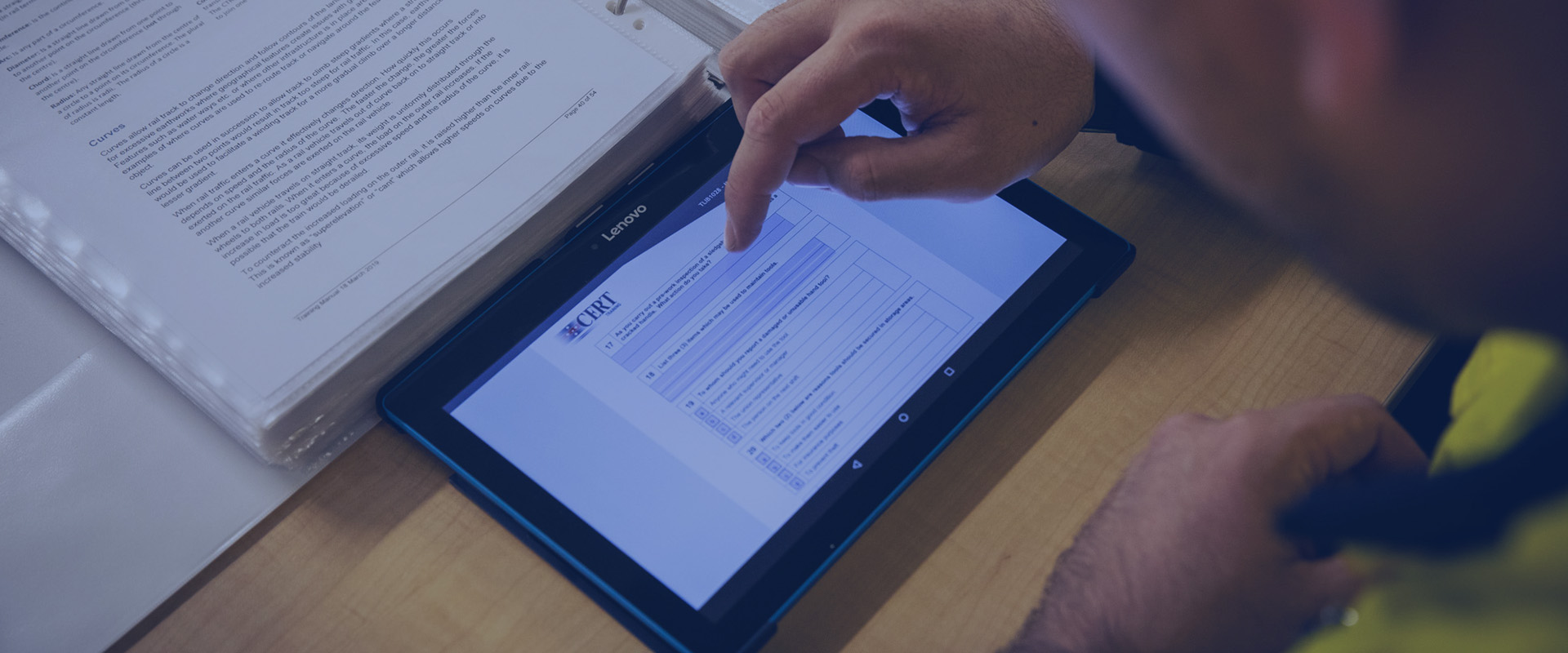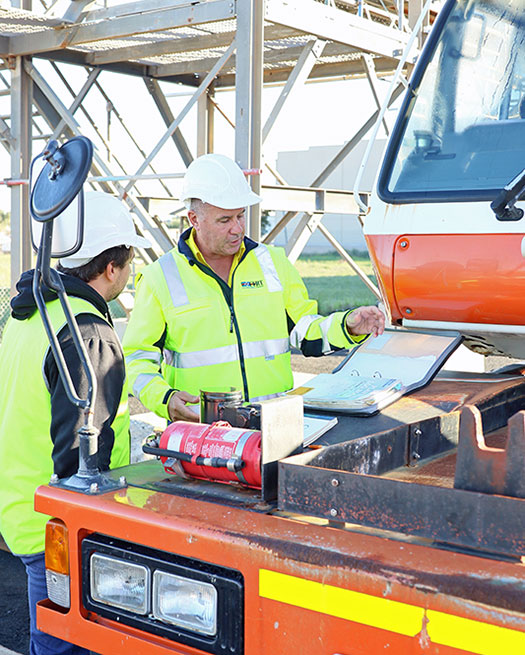
National Track Safety Awareness Training (NTSA)
WHY DO I NEED THE ARTC NATIONAL TRACK SAFETY AWARENESS COURSE?
The Australian Rail Track Corporation (ARTC) National Track Safety Awareness course is an induction training package specifically designed for any employee, contractor seeking access to, working in or around or moving products across the track or rail land managed by ARTC.
This course includes TLIF2080 – Safely access the rail corridor unit of competency which is required for the DPTI and ARTC Rail Networks and is suitable for individuals who are new to the rail industry and introduces participants to the key generic hazards of an operating rail environment including reading and understanding work safety signs and symbols and workplace policies and procedures and communicating identified hazards. This nationally recognised unit of competency is required by all roles across most Australian rail networks.
The ARTC network requires you to hold a Rail Industry Worker (RIW) card. This is an online program that gives participating organisations full visibility to a single electronic record of a workers competencies, health and education records as they move between employers or rail projects. Your primary employer must be in the RIW system and must order your RIW car (both physical and virtual).
Each rail network has different requirements for each employment role within a network, but all of these networks require you to hold a Rail Industry Worker (RIW) card. To find out the requirements for each employment role within a rail network, you can visit the RIW website and find the matrix which describes the National Units of Competence you must hold to move into different employment roles.
Dependent on the role you are fulfilling within the ARTC corridor, there may be inductions you are required to complete, through the ARTC Induction Portal. For more information on these inductions, visit the information page on their website. You may also require authorisation from the ARTC Property Management department and can find more information in the information page also.
Also required under Work Health and Safety (WHS) laws, personnel entering the rail corridor to perform work within an established worksite must also possess an accredited general construction induction training card, also commonly known as a White Card.
WHY SHOULD I CHOOSE CERT TRAINING?
CERT Training is a Network Operator-Approved Registered Training Organisation (RTO) on the Rail Industry Worker (RIW) website and is recognised by ARTC. Nationally, CERT employs in excess of thirty-five trainers and assessors with either a safety or rail background, and in most cases both. All CERT trainers have a minimum of ten year’s’ rail experience (most have in excess of twenty years) and two years’ training experience. Trainers have recent and ongoing experience in the delivery of rail infrastructure, rail operations and/or rail safeworking training and assessment.
WHAT RAIL INDUSTRY ROLES DOES THIS RELATE TO?
If high-risk work tickets, certifications, or licences are also held, completion of this course, a category 3 medical, and a Construction Industry ‘White Card’ (CPCCWHS1001 Prepare to Work Safely in the Construction Industry) will allow the learner to work across a number of trade (plumber, carpenter, formworker, etc.) and plant operation roles in the rail corridor, also known as around the track personnel.
Job roles working directly or indirectly in the rail corridor may relate to:
- designing, construction, certifying, maintaining, repairing or monitoring the rail corridor and its infrastructure,
- signaling and signaling operations,
- rolling stock and rail infrastructure,
- driving/shunting through or to and from the rail corridor,
- utility providers and Councils,
- the development and management of Safeworking systems.
WHERE CAN I DO THIS COURSE?
The duration of this course is approximately 4 hours and can be completed at CERT Training Centre in Wingfield, South Australia.
If a company has several staff that require TLIF2080 – Safely access the rail corridor, training may be offered at your premises anywhere in South Australia, providing it meet network criteria. Additional charges may apply and you should contact the Royal Park office for more details. There are no pre-requisites for the ARTC National Track Safety Awareness course and a medical is not required to sit the course, but a minimum of a Category 3 Rail Medical must be completed before going on-track and gaining access to the rail corridor. CERT offers this service through through the accredited provider Company Medical Services and you can complete the medical at our office locations at 7am, before commencing training. Refer to their website for more information.
HOW AM I ASSESSED?
Learning is class-room based and delivered in English through a theory component entailing multiple choice and written answer questions, and a practical component which is conducted one-on-one simulation in which you demonstrate the basic tasks associated with working in the rail corridor using the knowledge gained throughout the course.
Prior to the commencement of training, all students are required to complete a Language, Literacy and Numeracy (LL&N) assessment. This assessment process ensures that students have the best opportunity to complete training and undergo assessment, as well as apply the areas of competence successfully in the workplace. All CERT Trainers are skilled and experienced in tailoring training and assessment strategies to assist students that may have language, literacy and numeracy issues.
WHAT CAN I DO NEXT?
CERT SA offer TLI21315 Certificate II in Rail Infrastructure. This qualification is often required by personnel and network operators prior to moving into roles such as rail labourer, track worker and track maintainer. For more information on this course, you can peak with the team at the Wingfield office.
WHEN CAN I COMPLETE THIS COURSE?
For more information on this course and to view dates, prices and locations click here

